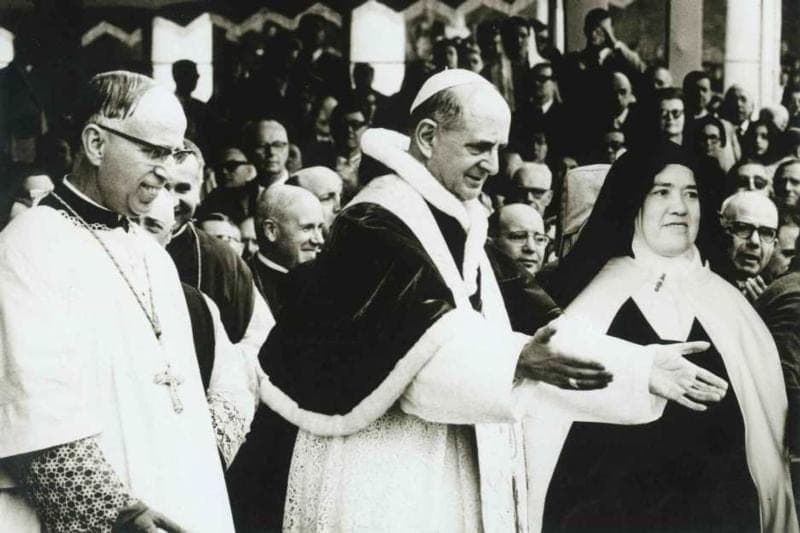ROME – The Vatican announced Wednesday that Pope St. Paul VI’s feast day will be celebrated annually on May 29 as an optional memorial.
“Before and after becoming Pope, Saint Paul VI lived with his gaze constantly fixed on Christ whom he considered and proclaimed as a necessity for everyone,” Cardinal Robert Sarah, prefect of the Congregation for Divine Worship, commented on the papal decree.
With this declaration, published Feb. 6, the pope who guided the Church through the Second Vatican Council will have his memorial inserted into the renewed General Roman Calendar and liturgical books that he promulgated in 1969.
The date of the memorial, May 29, is significant in that it is the ordination anniversary of Paul VI — then Giovanni Battista Montini — to the priesthood in 1920. Just four years later, Montini began his service to the Holy See, serving both Pope Pius XI and Pius XII. He was made Archbishop of Milan and then a cardinal before being elected pope in 1963.
“A saint is someone who brings divine grace to fruition in what they do, conforming their own life to Christ, Pope Saint Paul VI did this by responding to the call to holiness as a Baptized Christian, as a priest, as a Bishop, and Pope, and he now contemplates the face of God,” Sarah wrote.
The feast day for canonized saints is typically chosen as the date of their death, or “birth to eternal life,” Sarah explained, but Paul VI died on August 6, 1978, a date which is already celebrated in the Church as the Feast of the Transfiguration of the Lord.
Just before his death, Paul VI wrote in his meditation, “Pensiero alla morte,” “I pray that the Lord will give me the grace to make of my approaching death a gift of love to the Church. I can say that I have always loved her and I feel that I have lived my life for her and for nothing else.”
For Paul VI, “the Church was always, indeed his constant love, his principal concern, the object of constant reflection, the first and most fundamental thread of his whole pontificate. He wished nothing other than the Church would have a greater knowledge of herself in order to be ever more effective in proclaiming the Gospel,” Sarah said. With the papal decree, the Vatican also published the new texts for the memorial of St. Paul VI to be added to the Roman Calendar, Missal, Liturgy of the Hours, and Martyrology.
“The Collect prayer resonates with all that God accomplished in his faithful servant: ‘who entrusted your Church to the leadership of Pope Saint Paul VI, a courageous apostle of your Son’s Gospel’, and it asks: ‘grant that, illuminated by his teachings, we may work with you to expand the civilization of love,’” Sarah said.
He explained, “Here is synthesized the principal characteristics of his pontificate and his teaching: A Church, which belongs to the Lord (Ecclesiam Suam), dedicated to the proclamation of the Gospel, as recalled in Evangelii nuntiandi, and called to bear witness that God is love.” The second reading in the Office of Readings for Paul VI’s memorial is taken from passages of his homily during the last public session of the Second Vatican Council on Dec. 7, 1965.
Paul VI was canonized by Pope Francis on Oct. 14, 2018 along with Oscar Romero, and five other new saints. As pope, Paul VI oversaw much of the Second Vatican Council, which had been opened by Pope St. John XXIII, and in 1969 promulgated a new Roman Missal. He died in 1978, and was beatified by Francis Oct. 19, 2014. Apart from his role in the council, Paul VI is most widely known for his landmark encyclical Humanae Vitae, which was published in 1968 and reaffirmed the Church’s teaching against contraception in wake of the sexual revolution.
Paul VI also made history as the first pope to leave Europe. With his first apostolic journey to the Holy Land in 1964, Paul VI paved the way for the frequent worldwide travels that characterize the modern papacy, with trips to Jordan, India, the U.S., Turkey, Colombia, Uganda, Indonesia, Pakistan, and Iran, among others.
Sarah explained, “Like Saint Paul he spent his life for the Gospel of Christ, crossing new boundaries and becoming its witness by proclamation and dialogue, a prophet of a Church facing outwards, looking to those far away and caring for the poor.”















